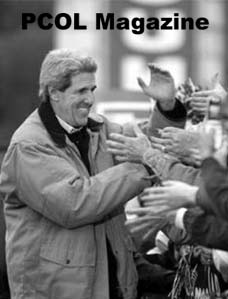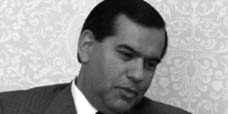
Architect Steven Ehrlich convinced his boss to give him six months to study the indigenous architecture and patterns of the Moroccan villages he was assigned to relocate because of a dam being built outside Marakesh
corps values
climbing into culture
By Cheryl Weber
climbing into culture
The essence of the Peace Corps experience is building a relationship with other cultures, and that is never simple to do. In 1970, Steven Ehrlich, FAIA, Steven Ehrlich Architects, Culver City, Calif., convinced his boss to give him six months to study the indigenous architecture and patterns of the Moroccan villages he was assigned to relocate because of a dam being built outside Marakesh. Taking along an interpreter and a draftsman, he drew houses and interviewed the villagers, observing how houses grew over time to accommodate growing families.
Baltimore architect Robert Olsen, in Tunisia from 1966 to 1968, believes that one of the reasons a public bath he designed was never built was because he'd made the entrance too public. "People, particularly women, don't like to be seen going into the baths," he says. "I had the entrance on a fairly prominent corner when it should have been off of an alley."
And what seems like progress to Americans may often be viewed differently by nationals. Peace Corps deputy director Jody Olsen, who was married to Robert Olsen during their Peace Corps days, recalls a project that brought water into the houses, eliminating the need for women to haul it from the community well. "We began to understand the rebellion that occurred," she says. "Women in this Islamic society didn't have a lot of ways of getting out to chat. They had lost a reason to get together that was extremely important. There are a lot of subtleties that architects have to be very involved with in order for their design work to be effective. You have to climb into the culture."
global village
If they're gratified to have helped provide better housing in poor countries, Peace Corps architects are also pretty clear about the experience's influence on their own lives. Tucker's stint in Tunisia ignited a passion for the urban revitalization and preservation work that he is known for in Memphis today. Olsen subsequently spent most of his career doing urban planning in developing countries around the world. Allegretti's practice mixes high-end homes on Lake Michigan with Habitat for Humanity housing and planning for disadvantaged communities. And Hallet is still leading trips to Tunisia with his students at Catholic University's School of Architecture.
Bill Kreager, FAIA, of Mithun in Seattle, was in Iran from 1968 to 1970. He can still strike up a conversation in Farsi, and he believes living in another language has made him a more observant listener. "We're doing a lot of work in Japan," he says. "I don't speak the language, but clients tell me they have the feeling I understand what they're saying." Kreager says that skill grew out of the need to observe the nuances of body language and facial expression to function in a foreign culture.
The architecture of developing countries, in which structures grow with an organic responsiveness of form to function, often made a powerful impression. While in West Africa, Ehrlich lived in courtyard houses and fell in love with their tranquility. "I see the courtyard house as a paradigm for new housing in the U.S.," he says. "I think it's a valid strategy for increased density and urban infill."
The Moroccan culture of graciousness and generosity also made an imprint: the way people gathered around a table and ate with their hands out of a tajime, or round pot, for example. And the town centers that encouraged casual gatherings. "People in America desire that, but it isn't always offered," Ehrlich says. "In my multifamily housing projects and on master plans for college campuses, I try to find that synergy."
When he returned to the U.S., Ehrlich, who grew up on the East Coast, was drawn to Los Angeles because of its rich cultural diversity and indoor-outdoor architecture. He likes to say that his graduate degree was six years in West Africa. And when he lectures to students, he tells them that "the most important job you get when you're out of school is not a job at all, but a way to have some experiences."
Steve Lloyd shares that perspective. Recently, he ran into a group of people in Amherst, Mass., who'd been in the Peace Corps. Despite the diversity of their experiences, he says, they felt they'd shared something profound. Partly it was the idealism, but it was also the knowledge that they had allowed themselves to be minorities in a foreign culture, and had benefited from it. "In the end, that's the only thing that's going to bring everyone together," Lloyd says, "that greater level of understanding of other cultures, and the compassion that results from it."
Cheryl Weber is a contributing writer in Severna Park, Md.






